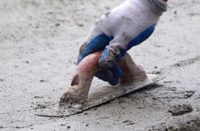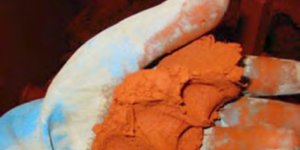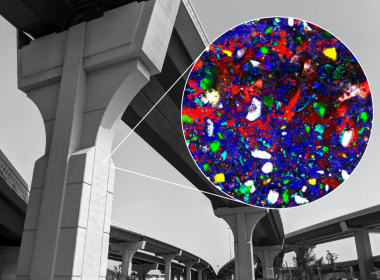
Is it hard to believe that scientists did not have a clear picture of the microscopic structure of concrete until now? Well, it’s true. The world’s most widely used construction material still holds some mysteries.
The website Phys.org revealed new research into whether the structure that forms when water, gravel, sand and cement powder are combined is a continuous solid, like metal or stone, or an aggregate of small particles.
A paper published this week in the Proceedings of the National Academy of Sciences by a team of researchers at MIT, Georgetown University and France’s CNRS (together with other universities in the U.S., France, and U.K.) have answered that question via the first atomic-scale model of the structure of concrete.
Roland Pellenq, a senior research scientist at MIT and co-author of the new paper, says the answer is a bit of both. The particle distribution is such that almost every space between grains is filled by yet smaller grains, to the point that it can be seen as a continuous material. But the grains within the mixture”are not able to get to equilibrium, or a state of minimum energy, over length scales involving many grains, and this makes the material vulnerable to changes over time. This instability can lead to “creep” of the solid concrete, and eventually cracking and degradation, so both views of the material are correct.
This in-depth analysis of concrete might lead to improved formulations to reduce greenhouse gas emisions or durability.















